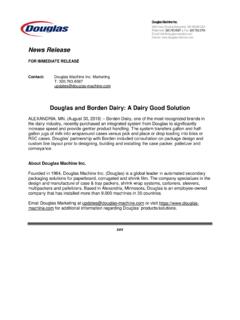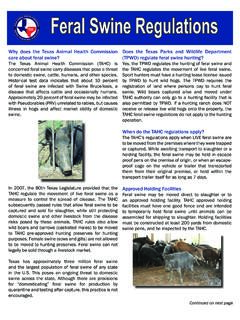Transcription of CARBONDIOXIDE Thegoodnews
1 CARBONDIOXIDEThe good newsIndur M. GoklanyWith a foreword by Freeman DysonThe Global Warming Policy FoundationGWPFR eport 18 GWPFREPORTSV iews expressed in the publications ofthe Global Warming Policy Foundationare those of the authors, not those ofthe GWPF, its Academic Advisory Coun-cil members or its directorsTHE GLOBAL WARMING POLICY FOUNDATIOND irectorBenny PeiserBOARD OF TRUSTEESLord Lawson (Chairman)Peter Lilley MPLord DonoughueCharles MooreLord FellowesBaroness NicholsonRtRevdDrPeterForster,BishopofCh ester Graham Stringer MPSir Martin JacombLord TurnbullACADEMIC ADVISORY COUNCILP rofessor Ross McKitrick(Chairman)
2 Professor Deepak LalAdrian BerryProfessor Richard LindzenSir Samuel BrittanProfessor Robert MendelsohnSir Ian ByattProfessor Ian PlimerProfessor Robert CarterProfessor Paul ReiterProfessor Vincent CourtillotDr Matt RidleyProfessor Freeman DysonSir Alan RudgeProfessor Christopher EssexProfessor Nir ShavivChristian GerondeauProfessor Philip StottDr Indur GoklanyProfessor Henrik SvensmarkProfessor William HapperProfessor Richard TolProfessor David HendersonProfessor Fritz VahrenholtProfessor Terence KealeyDr David WhitehouseCREDITSC over image CSIRO under CC good newsIndur M. Goklanyc Copyright 2015 The Global Warming Policy FoundationContentsForewordviiAbout the authorxSummaryxiIThe benefits of carbon dioxide11 Introduction32 Impactsofcarbondioxideonbiologicalproduc tivity4 Evidence for enhanced plant growth4 Present-day contribution of carbon dioxide to increases in crop yields 6 Impact of carbon dioxide enrichment on pests and weeds8 Contribution of carbon dioxide to increases in biological productivityin unmanaged ecosystems83 Ancillarybenefitsofincreasedbiosphericpr oductivity11 Improved human wellbeing11 Reduced habitat loss and pressure on biodiversity114
3 Impactsofhighercarbondioxideonwateravail abilityandirriga-tion requirements125 Impactsofhighercarbondioxidelevelsonmari nelife156 ConclusiontoPartI18 IIHuman and environmental wellbeing197 Empirical trends in climate-sensitive indicators of human wellbeing 21 Crop yields21 Sea levels21 Precipitation22vExtreme weather22 Disease22 Access to clean water and sanitation23 Living standards238 Whyareclaimsofdamagefailingtomaterialise ?23 Reliance on chains of unvalidated models23 Climate models overstate global warming24 Climate models don t do local well27 Climate models don t do precipitation well28 Adaptation methodology is flawed28In summary329 ConclusionstoPartII3310 Acknowledgements33 Notes35 ForewordByFreeman DysonIndur Goklany has done a careful job, collecting and documenting the evidence thatcarbon dioxide in the atmosphere does far more good than harm.
4 To any unpreju-diced person reading this account, the facts should be obvious: that the non-climaticeffects of carbon dioxide as a sustainer of wildlife and crop plants are enormouslybeneficial, that the possibly harmful climatic effects of carbon dioxide have beengreatly exaggerated, and that the benefits clearly outweigh the possible same facts are not obvious to the majority of scientists and politicians who con-sider carbon dioxide to be evil and dangerous. The people who are supposed to beexperts and who claim to understand the science are precisely the people who areblind to the evidence. Those of my scientific colleagues who believe the prevailingdogma about carbon dioxide will not find Goklany s evidence convincing.
5 I hope thatafewofthemwillmaketheefforttoexamine theevidenceindetailandseehowit contradicts the prevailing dogma, but I know that the majority will remain is to me the central mystery of climate science. It is not a scientific mystery but ahuman mystery. How does it happen that a whole generation of scientific experts isblind to obvious facts? In this foreword I offer a tentative solution of the thinkers and adopted by loyal disciples. Sometimes, as in the use of bleedingas a treatment for various diseases, irrational belief did harm to a large number ofhuman victims. George Washington was one of the victims.
6 Other irrational beliefs,such as the phlogiston theory of burning or the Aristotelian cosmology of circularcelestial motions, only did harm by delaying the careful examination of nature. Inall these cases, we see a community of people happily united in a false belief thatbroughtleadersandfollowerstogether. Anyonewhoquestionedtheprevailingbeliefwo uld upset the peace of the , withindividualswhoinvent new tools to explore nature and are not afraid to question authority. Sciencedriven by rebels and heretics searching for truth has made great progress in the lastthree centuries. But the new culture of scientific scepticism is a recent growth andhas not yet penetrated deeply into our thinking.
7 The old culture of group loyalty anddogmatic belief is still alive under the surface, guiding the thoughts of scientists aswell as the opinions of ordinary understand human behavior, I look at human evolution. About a hundredthousand years ago, our species invented a new kind of evolution. In addition to bio-logical evolution based on genetic changes, we began a cultural evolution based onsocial and intellectual changes. Biological evolution did not stop, but cultural evo-viilutionwas much faster and quickly became dominant. Social customs and beliefschange and spread much more rapidly than evolution was enabled by spoken languages and tribal loyalties.
8 Tribecompeted with tribe and culture with culture. The cultures that prevailed were thosethat promoted tribal cohesion. Humans were always social animals, and culture madeus even more social. We evolved to feel at home in a group that thinks alike. It wasmore important for a group of humans to be united than to be right. It was alwaysdangerous and usually undesirable to question authority. When authority was seri-ously threatened, heretics were burned at the issues today is still tribal. Science and politics are not essentially different fromother aspects of human culture. Science and politics are products of cultural evolu-tion.
9 Thinking about scientific questions is still presented to the public as a compet-itive sport with winners and losers. For players of the sport with public reputationsto defend, it is more important to belong to a winning team than to examine the evi-dence. Cultural evolution was centered for a hundred thousand years on tales told byelders to children sitting around the cave fire. That cave-fire evolution gave us brainsthat are wonderfully sensitive to fable and fantasy, but insensitive to facts and enable a tribe to prevail in the harsh world of predators and prey, it was helpful tohave brains with strong emotional bonding to shared songs and stories.
10 It was nothelpful to have brains questioning whether the stories were true. Our scientists andpoliticians of the modern age evolved recently from the cave-children. They still, asCharles Darwin remarked about human beings in general, bear the indelible stampof their lowly the year 1978, the United States Department of Energy drew up a Compre-hensive Plan for Carbon Dioxide Effects Research and Assessment , which fixed theagenda of official discussions of carbon dioxide for the next 37 years. I wrote in amemorandum protesting against the plan:The direct effects of carbon dioxide increase on plant growth and interspecificcompetition receive little attention.









